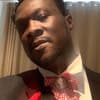Podcast
Questions and Answers
What is the primary purpose of assessing a patient's speech patterns during a cognitive/sensory assessment?
What is the primary purpose of assessing a patient's speech patterns during a cognitive/sensory assessment?
- To detect any Alterations in mental status (correct)
- To assess the patient's ability to follow commands
- To evaluate the patient's educational level
- To determine the patient's socioeconomic level
What is the rationale behind observing a patient's general appearance during a cognitive/sensory assessment?
What is the rationale behind observing a patient's general appearance during a cognitive/sensory assessment?
- To evaluate the patient's socioeconomic level
- To assess the patient's ability to follow commands
- To detect any Alterations in mental status (correct)
- To determine the patient's educational level
What is the purpose of asking direct questions related to person, place, and time during a cognitive/sensory assessment?
What is the purpose of asking direct questions related to person, place, and time during a cognitive/sensory assessment?
- To detect any Alterations in mental status
- To assess the patient's ability to follow commands
- To evaluate the patient's speech patterns
- To measure patient's orientation to immediate environment (correct)
What is the next step if a patient doesn't or inappropriately responds to orientation questions during a cognitive/sensory assessment?
What is the next step if a patient doesn't or inappropriately responds to orientation questions during a cognitive/sensory assessment?
What is the primary purpose of evaluating a patient's level of consciousness during a cognitive/sensory assessment?
What is the primary purpose of evaluating a patient's level of consciousness during a cognitive/sensory assessment?
ما النسبة التي تظهر أن Cranial nerve III هو سليم؟
ما النسبة التي تظهر أن Cranial nerve III هو سليم؟
ما الكraneial nerve الذي يتحكم في حركة اللسان؟
ما الكraneial nerve الذي يتحكم في حركة اللسان؟
ما هو الغرض من فحص المخزون؟
ما هو الغرض من فحص المخزون؟
ما هو ماينقسم فحص الأعصاب المخية إلى قسمين؟
ما هو ماينقسم فحص الأعصاب المخية إلى قسمين؟
ما هو Cranial nerve الذي يتحكم في السمع؟
ما هو Cranial nerve الذي يتحكم في السمع؟
ما هو ماينقسم فحص الأعصاب المخية إلى؟
ما هو ماينقسم فحص الأعصاب المخية إلى؟
ما هو المستوى الأهم في التقييم الحسي الحركي؟
ما هو المستوى الأهم في التقييم الحسي الحركي؟
ما هو هدف فحص الرفlexer؟
ما هو هدف فحص الرفlexer؟
ما هو أداة الاستخدام في فحص الإحساس باللمس؟
ما هو أداة الاستخدام في فحص الإحساس باللمس؟
ما هو الهدف من فحص التنسيق؟
ما هو الهدف من فحص التنسيق؟
ما هو المكون الثاني الاساسي في التقييم العصبي؟
ما هو المكون الثاني الاساسي في التقييم العصبي؟
ما هو الهدف من فحص الأعصاب القحفية؟
ما هو الهدف من فحص الأعصاب القحفية؟
Flashcards are hidden until you start studying
Study Notes
Cognitive/Sensory Assessment
- Assessing level of consciousness involves evaluating responses to verbal, light, and pain stimuli to detect alterations in mental status.
- Normal speech patterns are clear, well-paced, and coherent, and should be appropriate for the patient's educational and socioeconomic level.
- Observing general appearance, including hygiene and appropriateness of clothing to setting and weather, can help detect alterations in mental status.
- Asking direct questions related to person, place, and time helps measure patient's orientation to their immediate environment.
- Giving simple commands, such as opening and closing eyes or sticking out tongue, can help detect alterations in level of consciousness (LOC) and orientation.
Cranial Nerve Examination
- The examination involves assessing the function of the 12 cranial nerves, which innervate various structures in the head, neck, and trunk.
- Cranial nerve II (optic nerve) is tested by evaluating visual acuity, visual fields, pupillary light reflexes, and accommodation reflex.
- Cranial nerve III (oculomotor nerve) is assessed by evaluating pupil size and eye movements.
- Cranial nerve IV (trochlear nerve) is evaluated by assessing eye movements and convergence.
- Cranial nerve V (trigeminal nerve) is tested by evaluating both sensory and motor branches, including sensation and muscle function.
- Cranial nerve VI (abducens nerve) is assessed by evaluating the ability to abduct the eye.
- Cranial nerve VII (facial nerve) is tested by evaluating facial movements and sensation in the face.
- Cranial nerve VIII (vestibulocochlear nerve) is evaluated by assessing hearing and vestibular function, including nystagmus and balance.
- Cranial nerve IX (glossopharyngeal nerve) is tested by evaluating taste sensation on the back of the tongue and gag reflex.
- Cranial nerve X (vagus nerve) is assessed by evaluating swallowing and speech.
- Cranial nerve XI (accessory nerve) is evaluated by assessing shoulder and neck movements.
- Cranial nerve XII (hypoglossal nerve) is tested by evaluating tongue movement and speech.
Neurological Assessment
- Neurological assessments are essential in identifying and evaluating neurological disorders to determine the integrity and function of the nervous system.
- Sensory motor assessment and cranial nerve examination are two critical components of a neurological assessment.
Sensory Motor Assessment
- Sensory motor assessment evaluates the patient's ability to sense and interpret different stimuli and respond appropriately.
- Muscle strength and tone are assessed by asking the patient to perform various movements, such as clenching their teeth or pushing against resistance.
- Reflexes are automatic responses to specific stimuli, and examples include the knee-jerk reflex and the abdominal reflex.
- Coordination is evaluated by testing the patient's ability to perform complex movements, such as tapping their fingers or foot quickly.
- Sensation is assessed by testing the patient's ability to feel light touch, pinprick, vibration, and position sense.
Studying That Suits You
Use AI to generate personalized quizzes and flashcards to suit your learning preferences.





